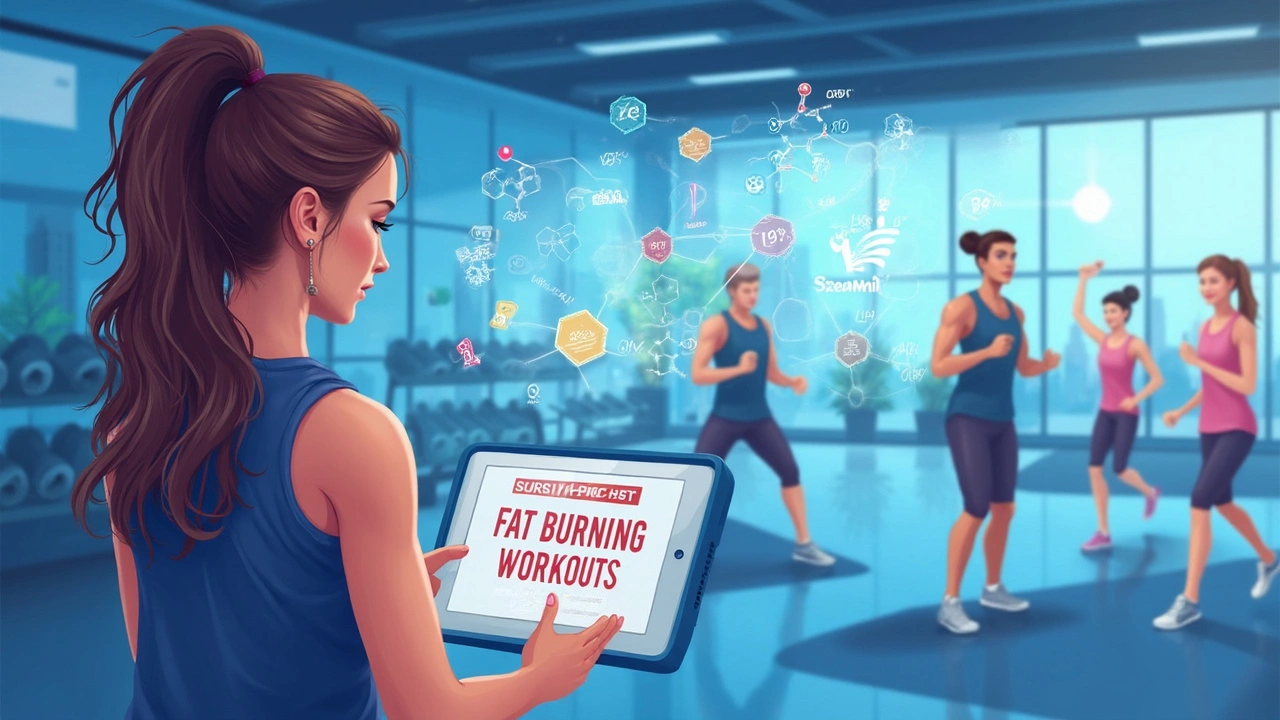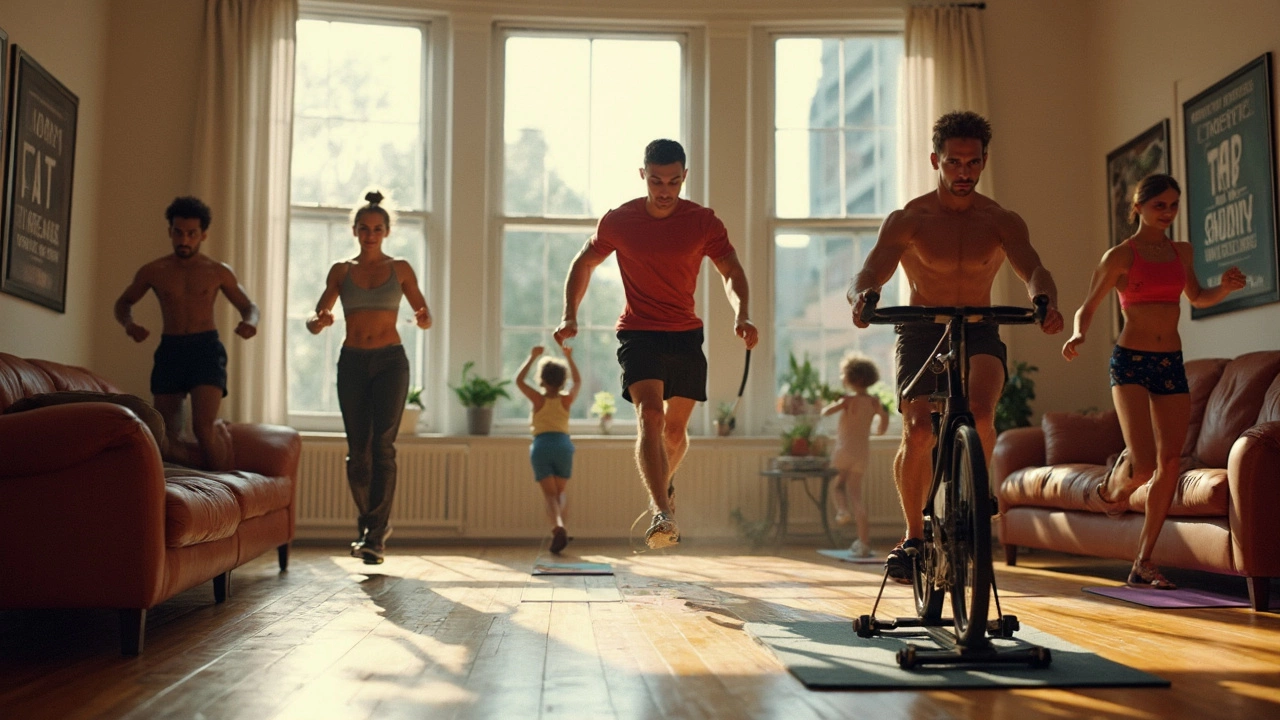Ask around and you might hear a thousand different answers—what's the absolute best way to burn fat indoors? Is it endless treadmill runs, sweaty spinning classes, or those wild dance cardio sessions on YouTube? The truth is far more fascinating—and maybe a little less predictable—than most people expect. Turns out, not every high-intensity workout is created equal when it comes to torching fat. Some are metabolic powerhouses, others more myth than miracle. What really matters isn't just how sweaty you get, but how your body reacts behind the scenes—even hours after you’ve turned off the playlist.
The Science of Fat Burning: What Makes an Exercise Effective?
Alright, here's where things get really interesting—scientists have uncovered some hard facts about how our bodies burn fat. You might assume it's all about sweating buckets, but it’s more complicated. Our bodies have two main sources for fuel during exercise: carbs and fat. The ratio shifts depending on the intensity and duration of what you’re doing. Moderate-intensity exercise burns a higher percentage of calories from fat as you go, but when cranked up to max effort, your body leans on carbs for quick energy. But—and it’s a big but—the total amount of calories burned matters much more than the fuel mix if your goal is to lose fat.
There's something called EPOC—excess post-exercise oxygen consumption, or as gym folks lovingly call it, the "afterburn". Certain workouts, especially high-intensity ones, jack up your metabolism for hours after you’re done. So, you’re still burning extra calories, even while binging your favorite show. A study from the University of New Mexico highlighted that short bursts of intense exercise, like HIIT, can crank up calorie burn for up to 24 hours post-workout—unlike steady-state cardio, which stops almost immediately when you step off the machine.
Here's a fun fact: a pound of fat equals about 3,500 calories. To lose a pound, you’ll need to hit a calorie deficit—burning more than you consume. Indoor exercises that blend intervals, engage big muscle groups, and keep your heart racing tend to win the fat-loss race. Don’t be fooled by low-effort movements or anything that lets you zone out; that stuff just doesn’t stack up. It’s the effort—the kind that makes you question your life choices mid-burpee—that turns your metabolism into a furnace.
One more thing: consistency trumps heroics. A giant workout once a week won’t do as much as smaller, regular sweat sessions. Motivation might get you started, but habits are what actually change your body fat percentage over time. So, which indoor exercises check all the boxes?
HIIT: The King of Indoor Fat Burning
If you’re looking for the gold standard in indoor fat-burning, forget long, steady jogs on the treadmill—High Intensity Interval Training (HIIT) steals the crown by a mile. HIIT workouts switch between super high-effort moves followed by short recovery breaks. We’re talking sprints, burpees, mountain climbers, and jump squats—stuff that leaves you breathless in less than a minute. After a HIIT workout, your heart feels like it’s got a drum solo going on, and your muscles are on fire.
Here’s the kicker: a 2015 study published in the Journal of Obesity found HIIT burns more fat, in less time, than traditional steady-state cardio. Participants doing 20-minute sessions, three times a week, shredded more belly fat compared to those doing 40-minute moderate workouts. Not only do you torch through calories fast, but that magical afterburn (EPOC) continues for hours after as your body recovers. This means even when you’re slumped over with jelly legs, your metabolism is still working overtime.
HIIT is easy to adapt—you can do bodyweight circuits, use a stationary bike, rower, or kettlebell. The secret is the intensity. Go hard during work intervals, then rest just long enough to catch your breath. A classic HIIT routine might look like this:
- 30 seconds sprinting or power move (like jump squats)
- 30 seconds rest
- Repeat for 15-20 minutes
If you want variety, try Tabata (20 seconds all-out, 10 seconds off, eight rounds per move), which scientists in Japan found to be especially brutal—err, effective—for boosting cardio fitness and melting fat. Always warm up a few minutes first, and don’t skip the cool down. HIIT isn’t for the faint of heart, but the calorie burn is simply unmatched indoors. A typical session scorches anywhere from 300-450 calories in just 30 minutes (for a person around 150-180 pounds), and that doesn’t even count the afterburn effect.
Stick to HIIT two to three times a week. It’s intense, so your body needs a break between sessions for muscles and joints to recover. If you’re new, start with shorter intervals or reduce the number of rounds. On non-HIIT days, consider a more mellow activity like yoga or stretching to keep everything balanced. Bottom line: for fat loss, nothing indoors beats HIIT for efficiency and results—if you can handle the challenge.

Other Fat-Burning Indoor Exercises Worth Trying
Let’s say for a second that HIIT isn’t your jam. Maybe you’ve got dodgy knees, or you just want something different. Good news—plenty of other indoor options torch some serious fat, especially when dialed up in intensity. Here’s a deep dive into some of the other heavy hitters.
Indoor cycling (aka spinning) consistently ranks highest for calorie burn—think 500-700 calories per hour at moderate to intense effort for the average sized adult. The trick is to alternate standing climbs, fast sprints, and heavy resistance intervals so your heart rate stays elevated. Bonus: it’s low impact, so your joints are happier than they are jumping around on hardwood floors. Mixing up intensities within a session mimics the metabolic boost of HIIT, too.
If you prefer something less machine-based, circuit training is another winner. String together moves like push-ups, lunges, squat jumps, planks, and step-ups. No breaks between exercises. After a quick breather, restart the circuit. Intensity matters: the less rest, the more your metabolism works overtime. Circuits that mix upper and lower body moves double down on calorie burn because bigger muscle groups need more fuel.
Now, don’t sleep on rowing machines. They don’t just fire up your arms—they hit your legs, glutes, back, and core. That means high-calorie output: in the ballpark of 400-600 calories an hour, depending on how hard you row. Try intervals or power strokes to send the burn through the roof—even pro athletes rate rowing as seriously tough.
If you get a thrill from rhythm, dance cardio can deliver impressive results, especially if you go all-in and keep the moves big. Following routines from instructors like Jessica Smith, The Fitness Marshall, or popping into a Zumba class online ups the energy and calorie output. Jumping, hopping, and swinging your arms not only burns calories, but gets you sweating with a smile (okay, a tired one).
For those with aches or injuries, there’s always swimming, if your gym has an indoor pool. Non-stop laps at moderate-to-hard intensity can torch 400-600 calories an hour, and the resistance from water works muscles without harsh land impact. If you’re landlocked, aqua aerobics gets your heart pumping too—give it a try if high-impact options aren’t a fit for you.
And if you just want to keep it simple, brisk walking on a treadmill at an incline can surprise you. Crank up the slope, maintain a quick pace, and keep your arms swinging—you’ll easily cross 300-400 calories an hour, with the added bonus of strengthening your glutes and legs.
One last thing: it’s easy to track calories with wearables and smart watches, but don’t obsess over the exact numbers. Everyone’s metabolism and muscle mass is a little different—what matters most is finding something you love enough to do regularly. When your indoor workout is actually something you look forward to, burning fat gets a whole lot easier.
Maximizing Fat Burn: Pro Tips, Nutrition, and Staying Motivated
Now we know which moves melt the most fat indoors, but the real game-changer is how you stack your habits outside the gym. First—fueling matters more than you think. You can crush every HIIT session and still stall fat loss if you’re snacking non-stop or missing sleep. Think of your *metabolism* like a campfire: you can stoke it with smart moves, but dump logs (aka calories) on non-stop and you’ll never see the flames burn bright.
Here are some honest-to-goodness pro tips to crank up fat burning—both while working out and, just as crucially, when you’re taking a break:
- Eat protein in every meal. Protein helps you hold onto muscle, which keeps your metabolism higher even at rest. Try eggs, Greek yogurt, lean meats, or tofu.
- Hydrate like your life depends on it. Even mild dehydration can slow your calorie burn and make workouts feel harder.
- Get quality sleep. If you’re averaging less than seven hours, hormones go haywire—your body craves junk and makes it harder to recover from intense workouts.
- Mix up your workouts. Doing the same routine makes your body efficient—which means it burns fewer calories over time. Swap in new moves or change up the intensity every couple of weeks.
- Don’t fear strength training. Lifting weights doesn’t just build muscle; it boosts calorie burn, especially when paired with short rest intervals. Women, especially, don’t need to worry about "bulking up"—you’ll simply get leaner and more toned.
- Be patient and track progress creatively. Sometimes, the scale lies. Snap progress pics, note how your clothes fit, and pay attention to energy levels instead.
Staying motivated is the real battle. Nobody wakes up thrilled for jump squats every day. Here’s what helps: set a clear, specific goal (like a race or a new deadlift PR). Reward yourself for effort, not just for results. Share your progress with a workout buddy, or join online groups that cheer each other on. Change your playlist, switch up your workout time, or splurge on fresh gear—sometimes tiny tweaks reignite your fire.
And when you’re having a tough day? Move anyway, but cut yourself some slack. Ten minutes of movement is better than nothing, and usually, once you start, you’ll want to keep going. It’s about building habits—something you can stick with long after today’s sweat dries.
Now, here’s the honest answer to what burns the most fat indoors: it’s the workout you can push hard, consistently, and return to again and again. Science backs up HIIT as the single most *effective* way to torch calories fast and sustain a fat-burning buzz long after you’re done. But if dancing in your living room, powering up the spin bike, or crushing circuits with weights keeps you coming back, you’re on the right track.










